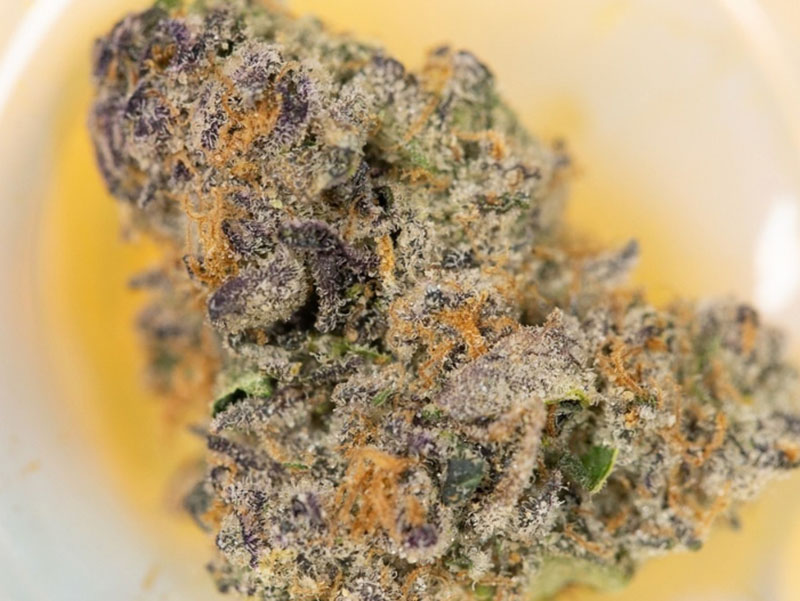Brain Health, Alzheimer’s Disease, and the Limited Research of Cannabis as Treatment
By Zachariah Finning
June is National Alzheimer’s and Brain Awareness Month. This month focuses on the impacts of the neurodegenerative disease as well as the overall importance of the healthy brain. In today’s busy world we take our brains for granted; jumping from one task to the next, errand after errand, click after click, workout after workout. The brain, however, is not only the powerhouse of the human body but also the processor for human cognition. It is vital to maintain a healthy brain function for so many reasons, including both our physical and mental health. In this blog, we will delve into the importance of healthy brain functions, as well as the definition and effects of Alzheimer’s Disease on the brain. Lastly, we will also explore the limited but promising new research surrounding cannabis and these topics.
The brain is involved in every aspect of one’s existence. It even operates on its own long before you leave your mother’s womb. Brain health is pivotal in our ability to act, think, and live well (S1). The brain is, on average, a three-pound organ that essentially controls all functions of the body. It not only translates information from our surrounding world but it also embodies the essence and soul of an individual (S2). The brain is composed of three major parts, the cerebrum, the cerebellum, and the brainstem. The highly complex organ receives information from all five of our senses, often that information is gathered from all senses simultaneously (S2). The brain assembles this information in a way that has meaning for us, and the information is then stored in our memory (S2). A shortened list of the brain’s primary responsibilities - outside of consciousness and memory - would include language and speech, thoughts and idea building, motor functions of the body's extremities, as well as the function of many of our internal organs (S2). The Central Nervous System, which controls almost everything in our body, is made up specifically of the brain and spinal cord. While the Peripheral Nervous System, its extension, is composed of spinal nerves that branch off from the spinal cord and cranial nerves that branch out from the brain (S2). All the signals that pass through these bodily systems originate in and return to the brain. If our bodies were compared to a computer our brains would be the central or core processor while the rest of us are just assembled pieces needed to complete daily operation.
Besides understanding what the brain does, we must also understand that the choices we make and the lives we lead can directly affect how the brain functions and grows. The sobering reality of the matter is that a multitude of factors come into play when talking about dementia, cognitive decline, and other brain-related illnesses (S1). All of which you have some control over. One of the first and most important steps to maintaining our brain health is to control any chronic conditions. For example; high cholesterol, diabetes, and even high blood pressure can all impact your brain health. Regular checkups and following prescriptions instructions for these conditions will help you keep these diagnoses in check and lessen the negative effects associated with them (S1). Doctors and health experts recommend a multitude of activities and solutions to keep your mind and your brain healthy. Being active is a big part of brain health. Exercise doesn’t just give your muscles a lift, it also has been shown to increase the network of blood vessels that supply the part of the brain responsible for thought. It can also protect against diabetes and lower blood pressure which will directly lead to healthier brain functions (S1). Another key aspect to keeping our wit is called brain training. Keeping our noggin in use is critical to its operation. Learning a new language, puzzles, reading books, even arts and crafts are all stimulating to the brain. Challenging your brain with mental activities such as these stimulates the formation of new nerve cell connections and may even encourage new cell generation (S1). Unsurprisingly eating well is another crucial part of keeping our heads straight. Avoid foods with too many sugars and or saturated fats. Instead go for fruit or vegetables, lean proteins, and healthy oils from nuts, fish, and even avocados. These types of foods have been proven to help protect proteins related to brain functions (S1). The last step in ensuring your healthy brain is one many of us struggle with; quality sleep. Sleep is our body's chance to shut down, repair, and regenerate. With recommendations for adults between seven to nine hours of sleep, most of us would be considered sleep-deprived by definition. Lack of sleep has been shown to make it difficult to concentrate and focus, sleep is essential for us to perform at our cognitive peak (S1). Although it is our brain's job to control our bodily and mental functions it is also our responsibility to ensure its success in those duties.
Before trying to fully understand Alzheimer’s Disease, we must try to wrap our heads around one of the more mysterious aspects of our brains and personality, our memory. Memory is an intricate process that includes three major phases. Scientists label these three phases as; encoding, storing and recalling (S2). The encoding phase is where the brain is translating information from the outside world and deciding which information is important enough to remember. The storing phase is a little more complex as different areas of the brain are involved in different types of memory. The recalling phase is when the brain calls upon those different areas of the brain to access and utilize that stored information (S2). Besides the three major phases of intaking memory, there are also three major types of memory. We all know the first two, Short-Term Memory and Long-Term Memory but the third, and lesser-known, is priceless to us; This is Skill Memory. Short Term, also called working memory, takes place in the prefrontal cortex of the brain. It can hold onto information for no longer than a minute and its capacity is about 7 different items (S2). This form of memory allows you to write down an address someone just gave you it also stores the previous sentence you just read so that this one will make sense. Long-Term Memory is processed in the hippocampus, located in the temporal lobe of the brain. This memory is called upon when you want to memorize something or retain it indefinitely (S2). The capacity of this memory is unlimited and it is duration is the same. It contains our personal memories, figures, and facts. The last and crucial form of our memory is Skill Memory. This is processed in the cerebellum which then relays the information to specific areas. This type of memory is for autonomous learned memories such as learning to ride a bike, practicing martial arts, or playing the piano (S2). Memory although complex in understanding is essential in making up who we are as a human.
With a little more knowledge about the brain and memory under our belt, we can start to explore the meaning of, and effects caused by, Alzheimer’s Disease. The disease was first discovered by Dr. Alois Alzheimer in 1906 (S3). He proposed there are two prominent indicators of the disease: “Plaques” and “Tangles”. The term “plaques” refers to deposits of a protein called beta-amyloid (A-Beta). When these A-beta molecules clump together in the brain they form plaques that prevent signals from being transferred between nerve cells in the brain, ultimately causing these cells to die (S3). The term tangles shed light on clumps of another protein called Tau. Tau proteins can be described as parallel railroad tracks within the brain. Important nutrients are transported along those tracks, keeping the brain cells alive (S3). In a healthy functioning brain, Tau proteins would ensure that essential nutrients can reach their destination. In a brain affected by Alzheimer’s those Tau proteins collapse and twist, creating the tangles, preventing nutrients from reaching the brain cells. This again results in brain cell death (S3). When the brain cells die, due to these plaques and tangles, there is considerable shrinkage in certain areas of the brain. A person with Alzheimer’s Disease has less brain tissue than an individual who does not suffer from the affliction. The shrinkage of the brain will continue over time drastically affecting how it functions (S3). The disease, as of now, is irreversible and fatal. It will eventually affect all aspects of a diagnosed patient’s life: how they act, think, feel, and recall memory. Each individual is affected differently and it is almost impossible to predict symptoms and the order in which they appear. The speed and progression of the disease also vary from person to person (S3).
The changes that can be expected as the disease progresses are numerous. First and foremost; Cognitive and functional abilities will be affected. This means it will be harder for an individual to understand, remember, think, and communicate. Their ability to make decisions, follow a simple conversation, even complete simple tasks will become increasingly more difficult. Episodes of confusion and memory loss, initially short term but eventually effecting long term as well, will become more and more common over time (S3). Secondly, emotions seem to be heavily weighed upon as well. One may seem to be apathetic in nature and even lose interest in favorite hobbies or activities. Some patients become withdrawn and non-expressive (S3). Thirdly One’s behavior may also seem not in line with one’s character. Common behavioral reactions associated with the progression of Alzheimer’s include hiding physical possessions, physical and verbal outbursts, and repeating the same phrases or physical actions over and over (S3). Lastly, the disease will progress enough to impair physical abilities. It will impair coordination and mobility to the point where day-to-day tasks such as bathing, dressing, and eating will require assistance (S3). At this point, it is recognized that the disease has progressed to its advanced stage. During moderate and into severe stages of Alzheimer’s the neurotransmitter known as glutamate leaks out of damaged nerve cells and is consequentially reabsorbed at levels that are toxic to the cell itself (S4). This results in an even more rapid deterioration of brain health and function. As we can see the effects Alzheimer’s has on an individual vary far and wide and no specific one is more pronounced than the other.
Treatments for Alzheimer’s Disease have remained mainstream medical and pharmaceutical for some time. There are several medications that can help with a variety of symptoms including memory decline, thinking ability, and motor skills (S4). Although there still is no cure for the disease those shown to respond well to these forms of treatment may experience improvement in the quality of life for up to several years. Main forms of treatment for mild to moderate stage Alzheimer’s are in the form of Cholinesterase inhibitors (S4). These inhibitors help individuals by improving the ability of damaged nerve endings to transmit messages from one nerve cell to another. As stated previously these drugs may help an individual for two to several years. However, eventually, the nerve endings will degenerate and these types of drugs are no longer effective (S4). The only treatment beyond that is aimed at the late stages of the disease. Memantine hydrochloride is a pharmaceutical that works by blocking the reabsorption of glutamate into nerve cells (S4). This medication is only intended to slow the final stages of Alzheimer’s. The medical research on cannabis’ effects on the disease and its symptoms are limited and highly scientific. A promising study supported by the National Research Foundation of Korea shows that THC and CBD combinations seem to show some beneficial effects. The results of these studies confirmed that CBD helped to protect certain brain cells from A-Beta neurotoxicity, oxidation stress, and increased cell survival (S5). CBD was also shown to inhibit the failure of the Tau proteins in the brain (S5). Additionally, CBD+THC treatment on the A-beta proteins of transgenic mice revealed that “CBD+THC treatment was effective in memory and CBD+THC treatment was more effective than CBD alone or THC alone treatment”. These results implied that the “CBD components of cannabis might be useful to treat and prevent AD (Alzheimer’s Disease) because CBD components could suppress the main causal factors of AD. Moreover, it was suggested that using CBD and THC together could be more useful than using CBD or THC alone” (S5). Another abstract in a study published by the National Library of medicine also confirms that “THC directly interacts with A-Beta peptide, thereby inhibiting aggregation” (S6). In layman’s terms, it slows the formation of the A-beta plaques that directly result in Alzheimer’s. The Abstract goes on to suggest that “At the treatment concentrations [used], no toxicity was observed and the CB1 receptor was not significantly upregulated”. In conclusion, these studies would suggest that with proper dosage and proper intervals cannabis would not be detrimental, and even possibly beneficial, to a patient suffering from Alzheimer’s Disease.
Our brain is the most complex organ in all the known world and we are one of the most intricate living organisms known to science. More tangled and complicated than that is our memory and how we make up who we are as a person. Keeping our brains healthy and our minds sane is a responsibility of one own’s undertaking since the moment of young adulthood. Eating healthy, working out, getting enough sleep, even learning new things and activities can all help you ensure that you are giving your brain, mind, and memory the workout it needs to keep itself functioning properly. How we age is different from person to person just like the drastic effects of Alzheimer’s disease on the human mind and body. Currently, pharmaceutical medications and treatments for the disease have remained stagnant and only help to slow the eventual decline of mind and body. Some recent research on the front lines of medicinal cannabis show promise in treating not only the afflictions of Alzheimer’s but the root cause of the disease. Hopefully, as more research is done and collected cannabis will be seen as a treatment for the loss of memory and brain function, oddly contradicting the age-old myth that cannabis is bad for your brain.
Sources:
- https://myhometouch.com/articles/why-is-brain-health-important
- http://www.mayfieldclinic.com/pe-anatbrain.htm
- https://alzheimer.ca/en/Home/About-dementia/Alzheimers-disease
- https://alzheimer.ca/en/Home/About-dementia/Treatment-options/Drugs-approved-for-Alzheimers-disease
- https://www.ncbi.nlm.nih.gov/pmc/articles/PMC6970569/
- https://pubmed.ncbi.nlm.nih.gov/25024327/












